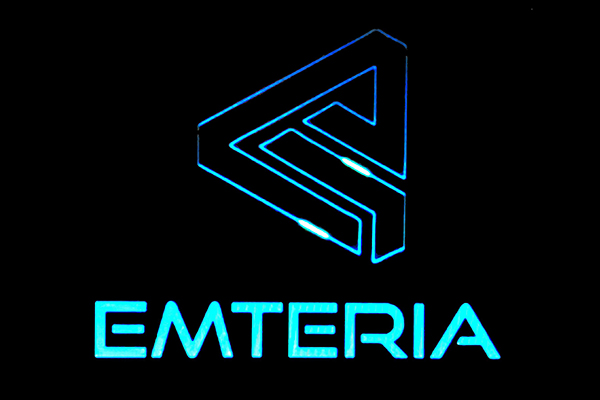Artificial Intelligence (AI) models are computational tools designed to simulate aspects of human intelligence. Once trained on large volumes of data, these algorithms evolve into models capable of recognizing patterns, making decisions, and generating insights. The more data they learn from, the more accurate they become. From machine learning and deep learning to generative AI and natural language processing (NLP), various model architectures power automation, improve diagnostics, and drive data-informed decision-making across industries. These models are now at the core of intelligent systems.
What Is an AI Model?
An AI model is a mathematical representation of a system or process. It learns from large datasets to recognize patterns and make predictions—without the need for explicit programming. The training process typically includes data preprocessing, feature extraction, and model tuning, enabling applications like facial recognition, speech interpretation, and autonomous driving.
How Do AI Models Work?
AI models analyze input data using statistical algorithms and machine learning techniques to uncover patterns and correlations across massive datasets. The model development process generally includes the following steps:
- Data Collection and Preparation: Gathering a large, diverse, and relevant dataset is essential. This data must be cleaned and preprocessed to remove errors and inconsistencies, ensuring high-quality input for training.
- Model Selection: Choose an AI model based on the problem type, dataset size, available computing power, and task complexity. Common options include linear/logistic regression, decision trees, random forests, support vector machines (SVMs), and neural networks.
- Model Training: Select a learning method—supervised, unsupervised, or semi-supervised—and train the model by adjusting parameters to minimize prediction errors on the training data.
- Performance Evaluation: Use appropriate metrics to assess accuracy and generalization. For example, image models may use inception score (IS) or Fréchet inception distance (FID) for generative tasks.
- Fine-Tuning: If results are unsatisfactory, refine the model by tweaking data, architecture, or training processes, then reevaluate. This iterative tuning helps improve performance.
- Model Deployment: Once optimized, deploy the AI model into a real-world environment to make predictions or decisions. Ensure safeguards against bias and protect user privacy throughout deployment.
Core AI Model Architectures (By Structure)
AI models are constructed using various architectural designs, each suited for specific data types and applications. Below is a summary of foundational AI architectures and representative models:
| Architecture | Description | Popular Models |
|---|---|---|
| CNN (Convolutional Neural Network) | Specializes in image processing and local spatial feature extraction | LeNet, AlexNet, ResNet, YOLO |
| RNN (Recurrent Neural Network) | Ideal for sequence data like time series and natural language | LSTM, GRU, Bi-RNN |
| Transformer | Leverages self-attention for high parallelism, suited for long sequences | BERT, GPT, T5, ViT |
| GNN (Graph Neural Network) | Designed to handle graph-structured data such as social networks or recommendation systems | GCN, GAT, GraphSAGE |
| MLP (Multilayer Perceptron) | A basic feedforward neural network, foundational to deep learning | DNN, MLP-Mixer (vision applications) |
These architectures are frequently extended or combined to meet the needs of complex enterprise and industrial applications.
5 Major Types of AI Models (By Application)
Beyond architecture, AI models can also be categorized by the tasks they are designed to perform—such as interpreting images, generating text, or handling multiple data types. The five most common AI model types include:
1. Machine Learning (ML)
Machine learning models are algorithms trained to identify patterns in data and make predictions or decisions with minimal human intervention. These models learn from large datasets and are widely used in natural language processing, computer vision, and predictive analytics. They’re built using frameworks like TensorFlow and PyTorch, which support scalable training and deployment.
Common Types of Machine Learning Models:
- Supervised Learning – Learns from labeled data to predict outcomes; ideal for classification and regression tasks.
- Unsupervised Learning – Identifies patterns in unlabeled data using clustering or dimensionality reduction techniques.
- Reinforcement Learning – Optimizes actions through trial-and-error by rewarding correct decisions and penalizing wrong ones.
2. Deep Learning (DL)
Deep learning is a powerful branch of machine learning that uses layered neural networks to analyze data and make complex decisions. Inspired by how the human brain works, deep learning systems learn patterns by passing data through multiple layers, each refining the output. These models excel at handling unstructured data like images, audio, and text, and are behind many breakthroughs in AI accuracy and performance.
Common Deep Learning Architectures:
- Transformer Models
Transformers process sequences in parallel while understanding context through attention mechanisms. Popular in NLP and large language models, they are used for translation, summarization, and text generation. Their encoder-decoder architecture has made them the foundation for state-of-the-art models like GPT, BERT, and LLaMA 2.0. - Convolutional Neural Networks (CNNs)
CNNs are optimized for image-related tasks such as classification, detection, and segmentation. They automatically extract visual features from data, reducing the need for manual engineering. Widely used in computer vision, CNNs require strong computing power like GPUs for real-time performance. - Recurrent Neural Networks (RNNs)
RNNs are ideal for sequential data such as speech, time series, and handwriting. They retain memory of previous inputs to inform future ones, making them useful in tasks that depend on context, like speech recognition or text prediction.
3. Natural Language Processing (NLP)
NLP allows machines to understand and generate human language. It powers voice assistants, chatbots, translation tools, and speech-to-text systems. Modern NLP uses deep learning to analyze large text datasets. Common tasks include sentiment analysis, part-of-speech tagging, and speech recognition.
Popular Pretrained NLP Models:
- GPT-4 / GPT-3– OpenAI’s large generative language models
- T5 – A flexible model handling various text-to-text tasks like summarization.
- ELMo – Generates word embeddings with deep context understanding.
- BERT / RoBERTa – Context-aware encoders for language understanding.
- DeepSeek – A powerful Chinese open-source LLM family built for reasoning, coding, and multilingual tasks, supporting both text and code generation across multiple modalities.
4. Computer Vision
Computer vision enables machines to “see” and understand images or videos using AI. It mimics human vision to identify patterns, detect objects, and analyze visual input in real time.
These models are trained on large datasets of labeled images and learn to classify or interpret visual elements by analyzing pixel patterns and RGB values at scale.
Key techniques include:
- Object Tracking – Follows specific objects across video frames for real-time monitoring.
- Image Classification – Assigns categories to whole images (e.g., cat, car, person).
- Object Recognition – Locates and identifies multiple objects within a scene.
5. Generative AI (GenAI)
Generative AI models create new content like text, images, audio, or video by learning patterns from vast datasets using neural networks and deep learning. They employ unsupervised or semi-supervised learning to generate human-like outputs.
Common types include:
- Generative Adversarial Networks (GANs): Two networks compete to generate realistic synthetic data, ideal for image creation.
- Transformer-Based Models: Examples include GPT-4 and LLaMA 2.0, excelling in text generation and content completion.
- Diffusion Models: Used for high-quality image and video synthesis.
- Variational Autoencoders (VAEs): Generate variations of training data, useful for photorealistic media.
- Unimodal and Multimodal Models: Process single or multiple data types; GPT-4 is multimodal, handling text and images.
- Large Language Models (LLMs): Trained on huge datasets to produce human-like language.
- Neural Radiance Fields (NeRFs): Create 3D scenes from 2D images using deep learning.
Geniatech offers scalable, flexible Generative AI solutions for diverse industrial applications.

Choosing the Right AI Model
From simple linear regression to advanced deep neural networks—is crucial for project success. Understanding each model’s strengths and limitations helps you pick the best fit for your goals. Key factors to consider include:
- Problem Type: Identify whether your task involves classification, regression, clustering, anomaly detection, or forecasting to guide model selection.
- Data Availability: Evaluate how much and what quality of data you have, including whether it’s labeled, since labeling can be costly and time-consuming.
- Model Complexity: Simpler models train faster and need fewer resources, while complex models require more data and computation.
- Computational Resources: Consider your hardware (GPUs, TPUs) and software tools, plus training time and inference speed to plan your workflow.
- Explainability: Some models (like decision trees) are easy to interpret, while others are black boxes but may deliver higher accuracy.
- Ethical Considerations: Ensure your model is fair, unbiased, protects sensitive data, complies with privacy laws, and that your choice is transparent and understandable.
Final Thoughts
AI models are the engines of modern intelligent systems, enabling breakthroughs across sectors—from healthcare and finance to manufacturing and media. As AI continues to evolve from perception to generation, understanding the different model types and architectures is vital for building practical, scalable, and ethical solutions. Whether you’re developing a chatbot, an industrial vision system, or a content generation tool, the right AI model makes all the difference.

